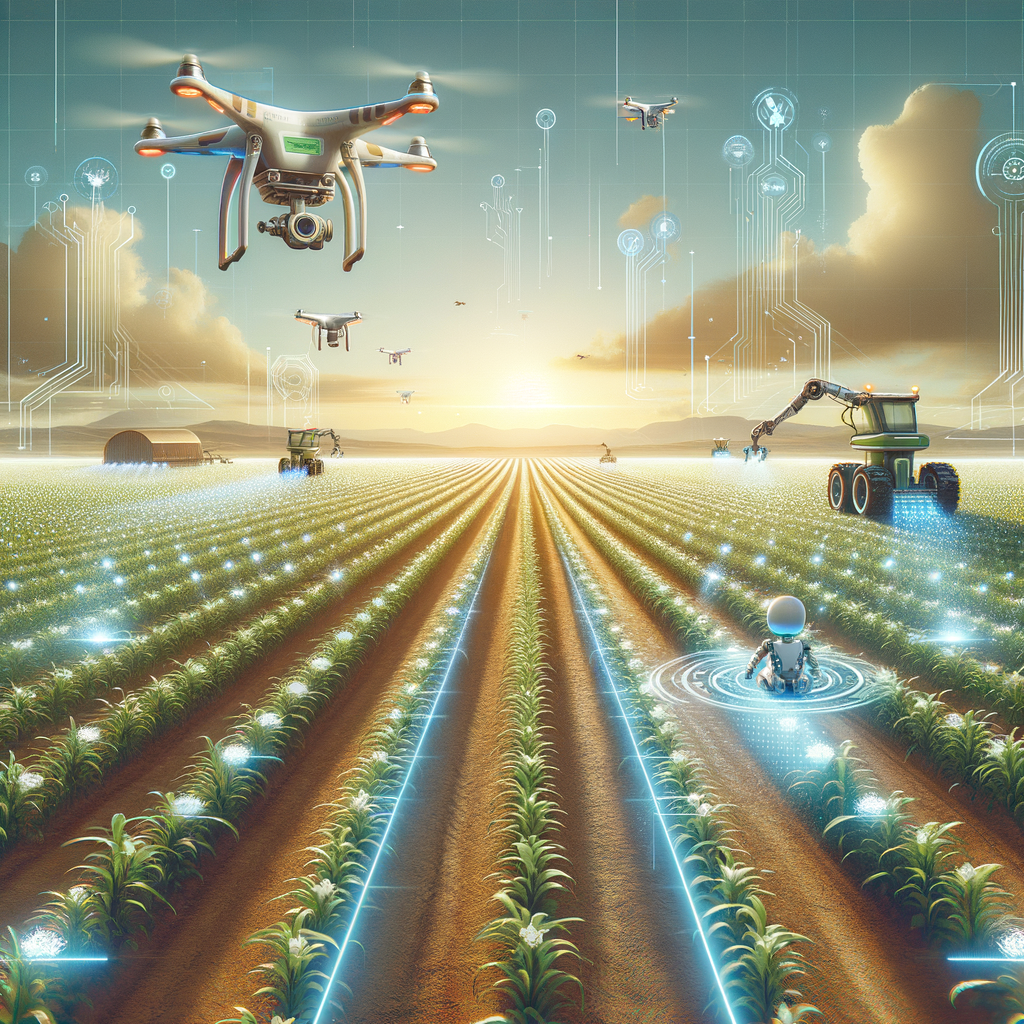
The Future of AI-Powered Food Production: Cultivating Innovation in Agriculture
Explore the transformative impact of artificial intelligence in agriculture. This blog delves into how AI technologies are revolutionizing food production, improving crop yields, precision farming, and sustainable practices, all while addressing global food security challenges. Discover the cutting-edge tools and techniques reshaping the agri-tech landscape and driving efficiency in the agricultural sector.
The Future of AI-Powered Food Production: Cultivating Innovation in Agriculture
The intersection of agriculture and technology marks a booming era for modern farming—a trend that bodes well for the increasing global demand for food. With the world's population anticipated to reach 9.8 billion by 2050, the agricultural sector faces unprecedented pressure to increase production sustainably. Artificial intelligence (AI) is emerging as a critical player in addressing this challenge, bringing about a paradigm shift in agricultural practices and food production systems.
The Role of AI in Modern Agriculture
AI in modern agriculture involves using data analytics, machine learning, and other intelligent systems to gather and analyze vast amounts of data from various sources, including satellites, sensors, and drones. The insights gleaned from this data enable more precise, efficient, and sustainable farming practices, thereby enhancing productivity and profitability for farmers.
1. Precision Farming
Precision farming or site-specific crop management leverages AI and data to optimize field-level management regarding crop farming. It aids in measuring variations in fields to optimize returns on inputs while preserving resources. AI technologies, including sensors and internet-connected devices, enable real-time decision-making by providing data on soil conditions, weather patterns, and crop health. This approach not only reduces waste in terms of fertilizers and pesticides but also minimizes environmental impact.
2. Crop Monitoring and Management
Frequently termed as the 'eyes in the sky,' AI utilizes drone technologies and satellite imagery to monitor crop health. These technologies provide high-resolution images and multispectral imaging to assess the state of crops, forecasting potential yields, and detecting diseases and pest infestations before they become a severe problem. With machine learning models, it's possible to develop predictive insights that help prevent crop failures and manage resources efficiently.
3. Livestock Management
Beyond crop management, AI plays a significant role in livestock farming. It facilitates the monitoring and managing of animal health, ensuring meat, dairy, and wool production's sustainability and efficiency. AI-driven facial recognition systems and sensor-based technologies monitor animal behavior, diet, and health, enabling farmers to detect early signs of illness and adjust feed regimes promptly.
4. Supply Chain Optimization
AI technologies are proving revolutionary in streamlining supply chains by forecasting demand, optimizing delivery routes, and managing inventory levels. AI tools can anticipate demand fluctuations by analyzing market trends and historical sales data, helping producers and suppliers minimize waste and reduce costs.
5. Weed and Pest Control
Traditionally, farmers have had to make broad applications of chemicals to manage weeds and pests. However, with AI's ability to accurately identify weed species and pest populations through image analysis, farmers can target hotspots with the precise application of herbicides and pesticides. This approach drastically reduces chemical use and environmental impact while maximizing crop yield.
Sustainability and AI in Agriculture
Sustainability is at the forefront of AI-driven agricultural innovations. AI aids in water management, soil health monitoring, and energy use, promoting environmental stewardship and sustainability. AI systems can predict water shortages, suggest optimal irrigation schedules, and identify degraded soil areas, enabling farmers to adopt more sustainable practices.
Water Management
AI models help forecast weather patterns, enabling better planning of irrigation schedules that conserve water. Automated irrigation systems connected to AI platforms can deliver precise water quantities based on the real-time needs of crops, reducing water wastage.
Soil Health and Conservation
Maintaining soil health is crucial for sustainable agriculture. AI tools can analyze soil health using data from sensors and provide recommendations on soil improvement strategies that increase productivity sustainably.
Future Prospects and Challenges
While AI holds great promise for transforming agriculture, challenges remain. These include high implementation costs, data privacy issues, the need for robust data infrastructure, and the digital divide that may leave smaller farms behind. Additionally, integrating AI into traditional farming practices requires a shift in mindset and the adoption of new skills on the part of farmers.
Conclusion
AI is already having a profound impact on agriculture, and its future looks even more promising. As AI technology continues to evolve, it will create new opportunities to enhance productivity, profitability, and sustainability in agriculture. Stakeholders—including farmers, policymakers, and tech companies—must collaborate to harness the full potential of AI, ensuring that technological advancements benefit farmers of all scales and contribute to global food security sustainably.